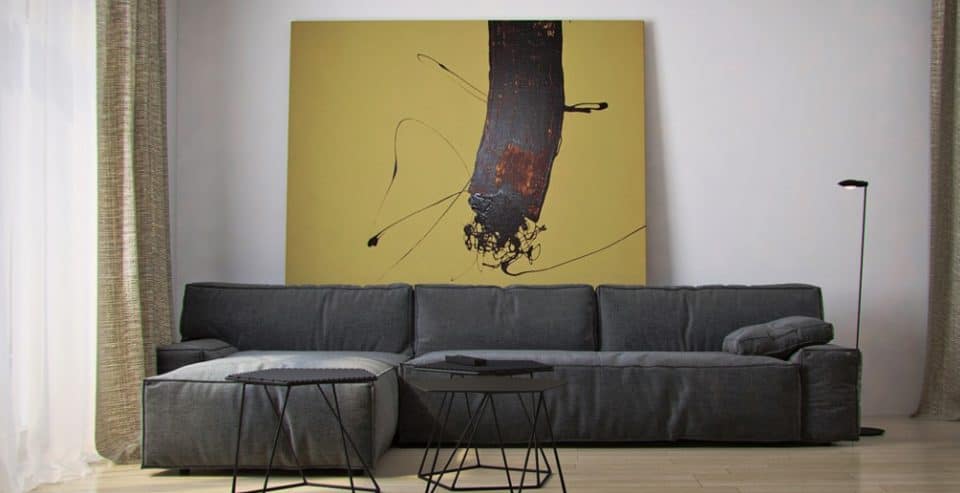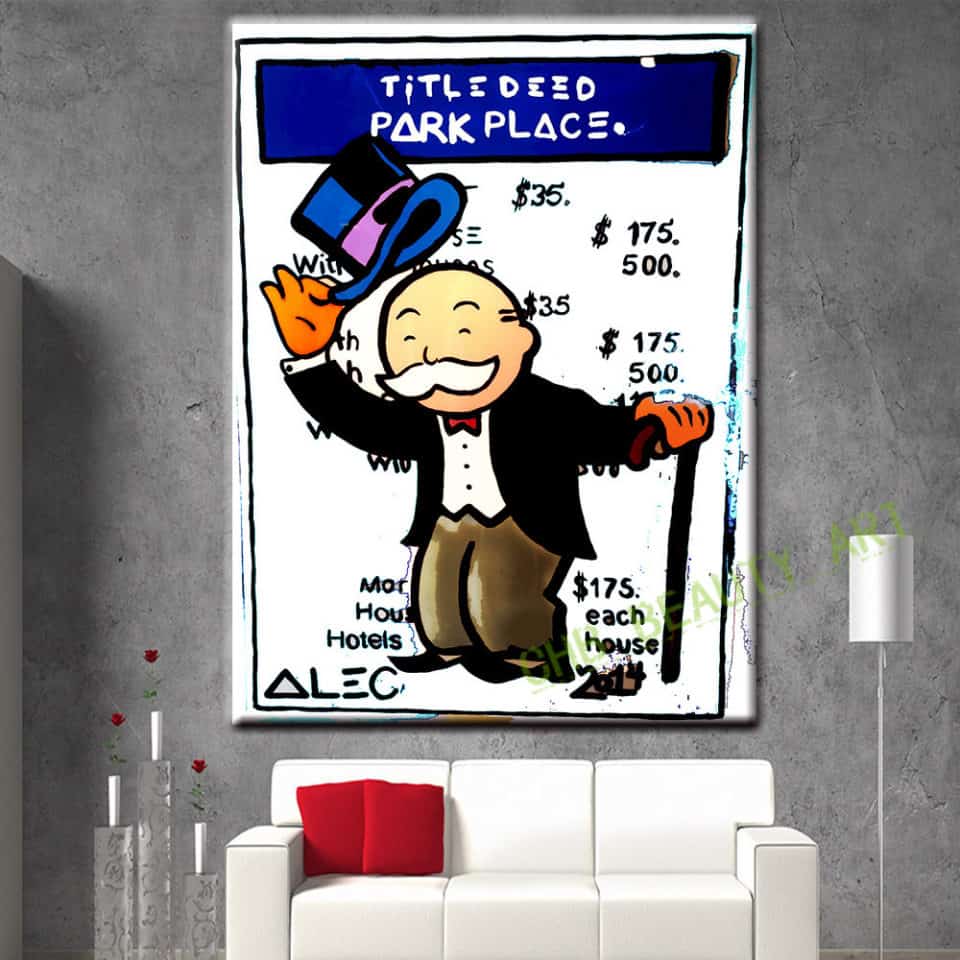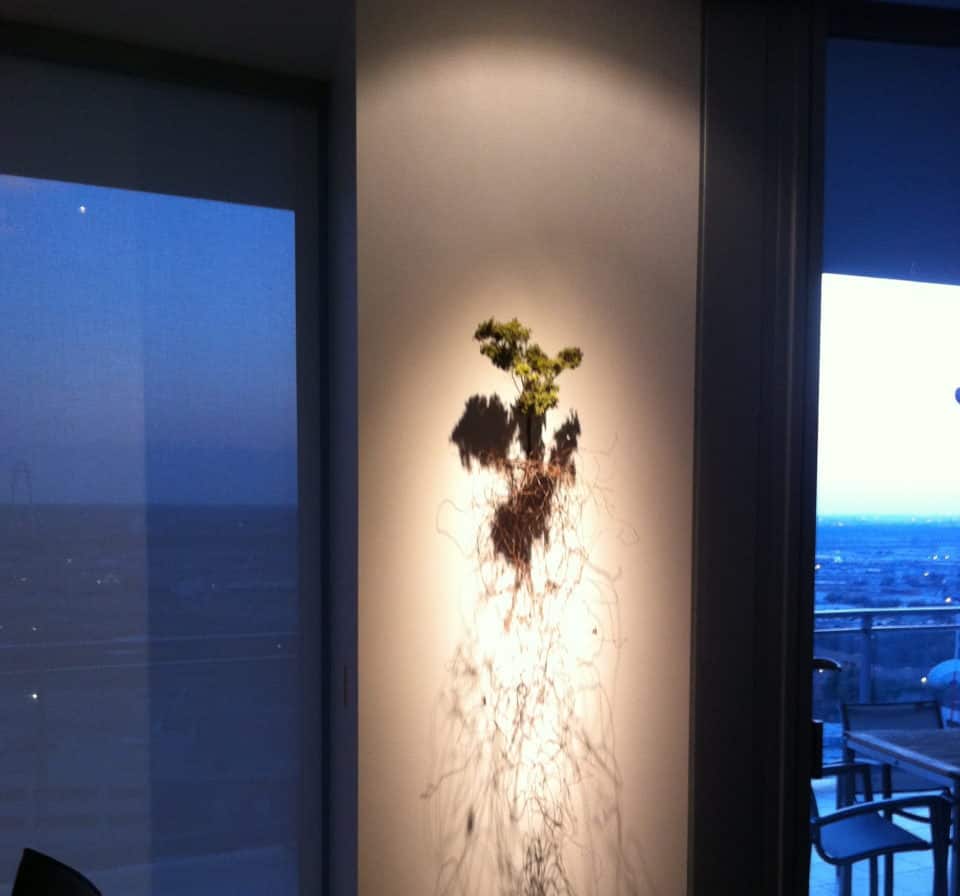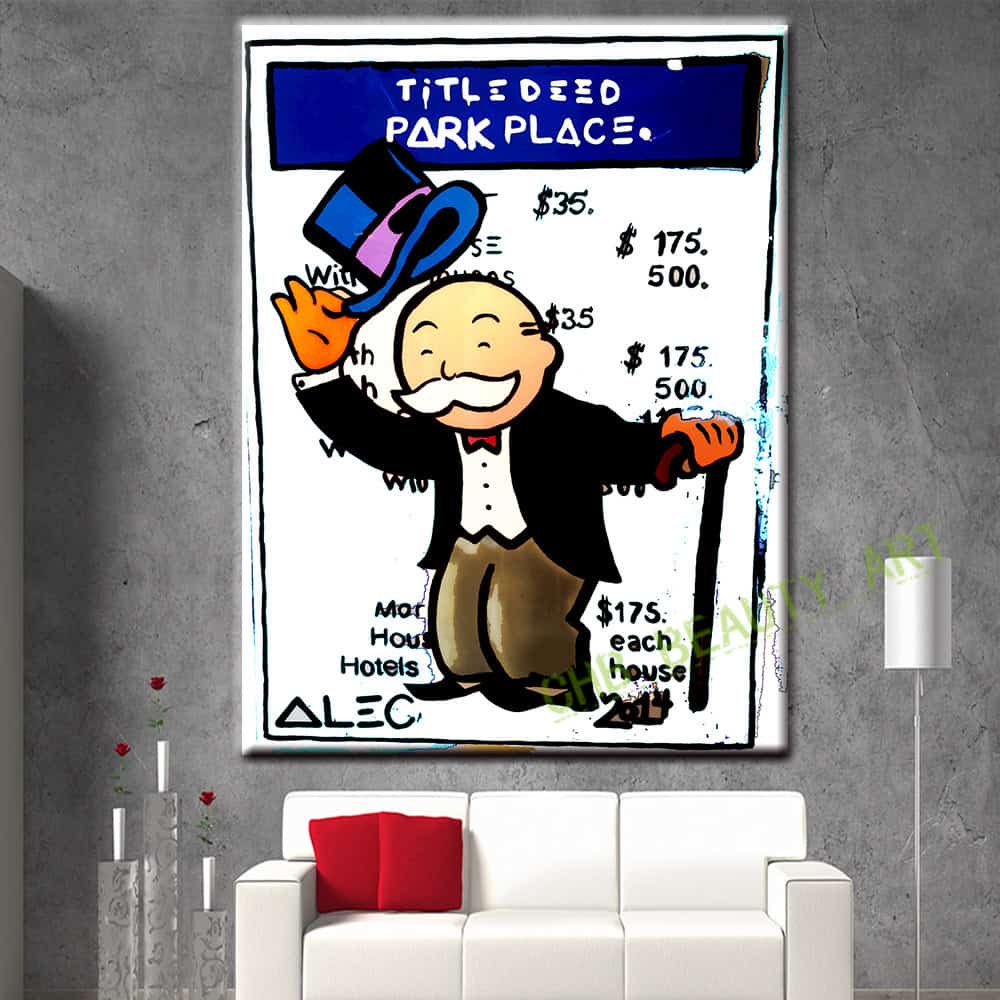Everyone wants to look smart, put together, on top of things. People shouldn’t be able to see that you are an overgrown child in an adult’s body until you choose to let them see the crazy. But achieving this coveted state of complete disguise is difficult and elusive.
One of the few foolproof ways to bamboozle your friends and impress the neighbors is to decorate as if you were a grown up. Once you have acquired all the necessary pieces of furniture, this means art. A polished piece of brass something hanging in the hall; a sculpture of wire and twine sitting coyly on a shelf. Placing art in your home says that you have got things figured out. It raises you to the level of landed gentry and people who go to the opera. Unless you already go to the opera, in which case it just gets you bonus points.
Location, Location, Location

You may have heard this term applied to buying a home, but it’s true too of what goes in that home after you buy it. For sizable paintings or sculptures, choose large walls or spaces that are already existing focal points for your exhibitions; this rule is why fireplaces and sofas are favorites for hanging pictures, and entry ways often house decorative urns.
Don’t restrict yourself to choosing only those pieces that will draw the eye dramatically, though. A small hand thrown vase or a series of tiny paintings placed on shelves or in corners can complement your decor and add cohesion to the room without drawing a lot of attention to themselves.
Just as important as choosing the right space to highlight is choosing which spaces to leave blank. Walls crammed with framed prints and hand painted masterpieces look cluttered and messy. Art needs room to breathe. Pick a wall or two to highlight, and let the rest serve as background.
If It Fits It Sits
View in gallery
Scale your choices appropriately. Select a piece, or a series of coordinating pieces, that fills the space without overloading it. The same way you wouldn’t want a minuscule photograph to be the focus of an entire wall, you don’t want an over-sized monstrosity to domineer a smaller area.
Get inventive with this. If you have a longer, narrower wall, consider it an opportunity to utilize creations that don’t fit conventional dimensions. Don’t necessarily limit yourself to one or two pieces; several smaller items can make up the space that a large picture would normally fill on its own.
Love It or Lose It

Just as important as finding space for your art is finding art that you like. Expensive does not mean fancier. Beloved by millions does not mean better. Not when it comes to decorating your home. What matters when choosing for you is if you like it. That’s pretty much the only criteria. That and can you afford it.
It’s ok to pick weird old paintings from yard sales, or a jug with a face on it from a craft fair. Unique finds are the best finds. It’s also ok to pick a print of a famous painting or photograph. It’s ok to hang a picture of your favorite heart throb celebrity from 1999. It’s your piece, and your home, and your choice.
Without hard and fast rules, your gallery becomes whatever you think it should be, but if you’re going for a general effect, there are some guidelines in place to help you. Warm colors such as reds and yellows are considered welcoming, and often recommended for entry ways to greet your guests. Blues and purples, cool colors, are thought of as relaxing visuals for your bedroom. Busy designs are great for lively living spaces, and tranquil scenes or still life works are awesome for areas of quiet contemplation.
Mix It Up

Texture contributes enormously to the feel of your home. Boring is the bane of a chic interior. When it comes to this part of the decorating process, clashing can be good. A gloppy painting breaks up a smooth wall. A glossy framed photo contrasts sharply against exposed brick. A collection of pieces that include some framed works, some unframed, and some metal or ceramic wall art grabs the eye.
Find the contrasts. Make some bold choices and don’t apologize. Discover new and ingenious ways of making your acquisitions pop. Put things that don’t necessarily go together side by side and see if they work anyway. Mix it up and see what happens.
No Dough Art

If you have an endless budget to spend on home decor, more power to you. If you don’t, though, it’s no big deal. Find something that speaks to you.
Find it second hand. Find it at craft shows. Trade for it if you don’t have the cash. And if all else fails, just make your own. A set of acrylics and a blank canvas won’t set you back too far, and a Pollock-like abstract piece heightens the intellectual tone of your home, while a landscape copied from a youtube tutorial is still original artwork, and nobody who looks at it is going to know where the idea came from.
Beauty is available in any price range. Creativity and a little vision is all that is needed to put a few pieces together that make your home a striking glory.
Light It Up: Illuminate Your Artwork

The last step in gentrifying your home gallery, is to give those pieces light. It doesn’t count as art if nobody can see what’s hung on your walls or tucked into the corners. Make sure your display is visible to all by directing a light source at it, if not directly, at least make sure that your featured pieces are out of the shadows.
If you have the option available, a ceiling light that can be positioned to point right at your tangible culture is fabulous. If not, illuminate the room it’s in, preferably brighten the wall it’s on, and let the natural beauty or intrigue draw the eye of your guests, without spotlighting it.










